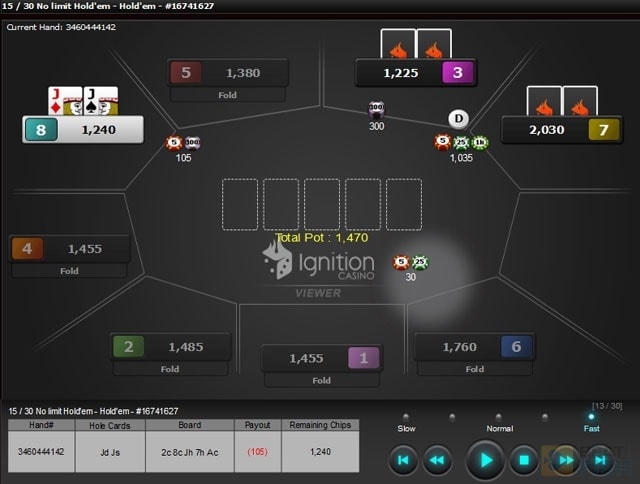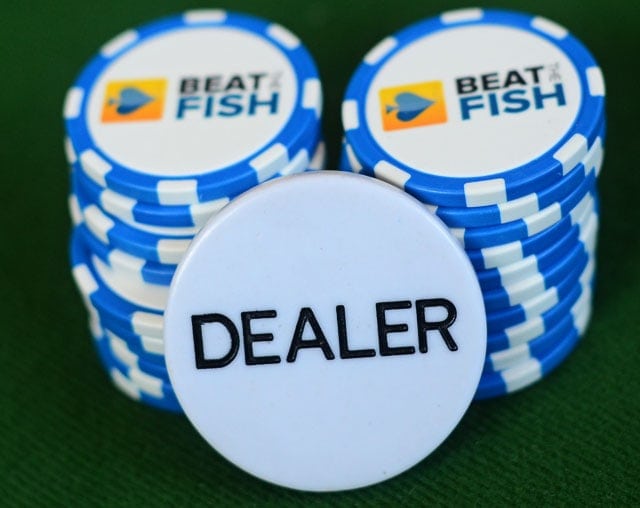Our Most Recommended Poker Sites for Sit & Go's
Example of 9 Player Sit and Go. In today's example of poker variance calculation we will play a SNG tournament for 9 players with the buy-in $5+0.5. The first three places are paid in the ratio 50/30/20. The prize pool is 9 players × $5 = $45. The fifty cents is a commission for an operator of the tournament (rake) that does not come into the. Let's say you play a $3.00 plus $.30 nine-man SNG.That provides a prize pool of $27, and the standard payouts are 50 percent ($13.50) to first place, 30 percent ($8.10) to second place and 20. Strategy: Sit & Go. Advanced Bubble Play for Six-Max Sit’n’Gos Introduction In this article. Why an adjustment of strategy is necessary in 6-max SNGs. ICM is a useful tool for sit’n’go play, it isn’t perfect and there are situations where it may be correct to deviate from it. Additionally, because the blinds pass through us more.
| Poker Site | USA? | Bonus | Register | Review |
| #1 | YES | $1000 | Sign Up | BetOnline Review |
| #2 | YES | $1000 | Sign Up | SportsBetting.ag Poker Review |
180-mans are the largest (sit n go) tournaments regularly played. They’re very soft, especially at the lower stakes, and they can yield high ROIs and payouts for top 3 finishes, which makes them great for beginners trying to build a bankroll.
The downside to 180-mans is that they take longer to complete compared to other tournaments. The turbo variation will take about 2 hours to complete, while the non-turbo will take about twice that.
Despite the time constraints, I highly recommend giving the (turbo) 180-mans a shot. They can be time consumer to learn though. So below, I’ve created a guide to show you how I approach these tournaments from start to finish, so that you can find profitability sooner, rather than later.

Note: This guide focuses primarily on the turbo variation. The difference in strategy will be that your short stacked more frequently in a turbo than non-turbo, so you’ll rely on push/fold poker more often.
Overview of Our 180-Man Sit n Go Strategy
Our general strategy will look something like this:
- Early stages – Stay tight because the chips aren’t worth going after early on, not to mention that we want to build some fold equity for later on.
- Middle stages – Use that fold equity to stay alive (if we’re short) and to steal the blinds, make reshoves and isolation shoves to build our stack.
- Late stages – Make the final 18 to cash, but preferably the final 9. That’s where the money starts to get bigger. Our ultimate goal is to finish in the top 3.
To achieve our ultimate goal, we’ll want to reach the final table(s) with about 25,000 in chips. This will give us the opportunity to exploit the other players that are wanting to make the final table without putting our stack at major risk. 25,000 chips is just shy of 10% of the total chips in play and is also a good goal to have at minimum for the final table.
Remember, 180-mans are very top-heavy, so playing to win and building a stack is important. We might bust a little more often because of our aggressive play, but that will be more than balanced with all of our top finishes (compared to min-cashes and 6-9th places).
So with that said, let’s get started.
Early Stages
The early stages of a 180-man sit will be anything before the 100/200 mark (before antes).
My strategy for the early stages is pretty much the same as any other sit and go tournament. My opening range is tight. I open all my pocket pairs, KQ and AT or better. In the smaller stakes I will limp my pocket pairs and in the higher stakes I will raise them. The reason for the difference is that in the lower stakes most pots will be multi-handed. So there is no sense in spending more preflop (expensive + ineffective), which cuts out the desire to c-bet too (also expensive + ineffective).
One of the differences between my 180 and 18-man strategy is that in a 180-man I will over-limp suited connectors, aces and kings, whereas in an 18-man it’s not necessary (or a good idea). By that I mean that it’s not nearly as hard to build a stack and/or make the final table in an 18-man. However, we need to find more opportunities and take more spots in a 180-man to build a file to stack. That means playing hands that can flop well, as well as go all-in with AK and sometimes AQ pre-flop.

Other than that I stay tight. We don’t want to get too far out of line so that we can build our fold equity for later on. Mostly because if you do not have any opportunities to build your stack you’ll eventually blind down. Once you hit that 10-15 big blind mark you’ll have to be in push/fold mode, which is more effective if you have some fold equity.
Middle Stages

The middle stages will start at the 100/200/25 mark, and will continue to the money bubble.
9 Man Sit And Go Strategy Plan
My strategy for this stage is to try to chip up for the money bubble. This is a good time to do it because with antes, each pot you win will add significant amount to your stack (usually 10-40%).
There are number of plays or strategies that will help you accomplish this. You can steal the blinds, re-shove on other players, squeeze or if you are a short stack, you can just go all in. I recommend going all in if you have a stack that is smaller than 15 big blinds.
Note: It’s very important to be aware of the other players at this stage, particularly those sitting to your left. If a player has around 20 big blinds or less, there will usually be enough money in the pot to justify a reshove (on you). So unless you plan on calling, or you know the players to your left are tight, you’ll want to avoid opening (frequently) when the players to your left have 10-20 big blinds.
Whenever you open during the middle stages I highly recommend that you raise for 2.5x the big blind. Opening with a min-raise (or slightly bigger) will give you more opportunities to steal since you are raising less each time. It also makes your continuation bets on the flop smaller. And to a lot of beginners or random players, a min raise looks very strong so it naturally has a lot of fold equity.

Another play that you can use during this stage is an isolation raise/shove. When a short stack shoves all in, you raise and/or shove to isolate them. The upside to this strategy is that when you win the stacks that you gain can give your stack a significant boost. The downside is that you’re the one calling a shove, so you’ll find that the races have thinner edges than if you were to make the plays first. Isolating regulars will be much better than isolating random players because their ranges will be much, much wider.
Money Bubble, Final 2 Tables and Final Table Bubble
The later stages of a 180-man will have two different bubbles — a money bubble and final table bubble. The last 18-cash, but only for double the buy-in. So the final 9 should be your minimum goal. This is where the payouts will start to stagger and get bigger.
The money bubble isn’t as tense of a situation as you might expect. From my experience, you can’t get away with abusing players as much as you can in other sit and goes, especially random players who don’t know any better. Now if we are short, we should try to do everything we can to make it into the money because even though a top three payout is what were shooting for, any cash is better than no cash.

9 Man Sit And Go Strategy Against
If we are in a spot where we can abuse the other players, I would focus on players that seem to have a clue as to what they’re doing (and that you have fold equity against). In other words, with one or two players left to make the money, they won’t make bad calls with hands like A8s suited or 22. They have some understanding of ICM.
Final 2 Tables
Once you get past the first bubble, and are now into the money, you want to pick up the aggression.
The reason why you want to get more aggressive here is because the first nine players make the same amount of money no matter what. In other words, they will make double their money back and only final table will make the staggered payout. If we’re a short stack, it doesn’t make any difference if we bust out 12 or 15 or 18, it’s all the same. So if you have a short stack, find the best spots and push and don’t think twice. Don’t try to hold on for a later position because it won’t make a difference.
If you have a stack that can abuse other players, you’ll also want to keep this mentality in mind. What I mean by that is you want to avoid the super short stacks because they can’t really be abused — they know they need to take a few flips and so they’ll call you lighter. You want to focus on players who have much more equity in the tournament, there much more to lose, instead.
Final Table
For the final table I’m just going to cover what would be a best case scenario. That would be making the final table with 25,000 to 50,000 in chips. This will give you plenty of room to open up hands, make steals and abuse other players with okay stacks, and not have to worry so much about just trying to stay alive.
My advice here is to steal from the larger stacks so that you become one of the larger stacks at the table. This will create a snowball effect, where the more chips you accumulate, the more you can run over the table. Depending on your stack and opponents you might want to be careful (remember, watch for reshove stacks), but this can be very effective if you’re deep enough.
Other than that you should just focus on playing poker, using ICM and a little bit of common sense. You’ll notice that it takes a little bit of run good to win these as well, so just play your best and try to take a top 3 spot.